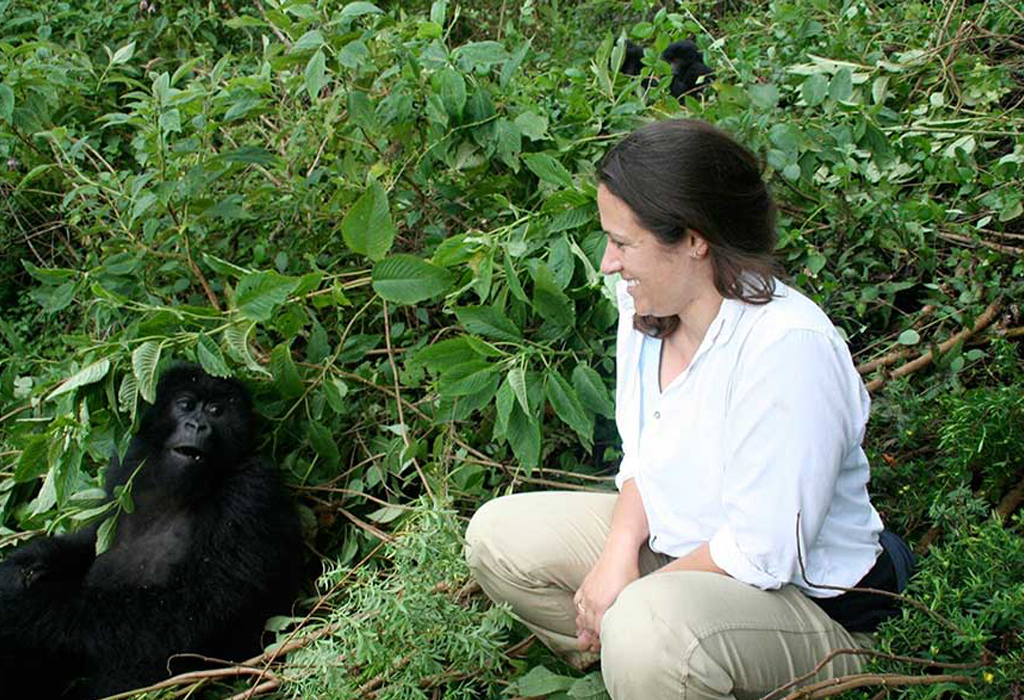
The Three-Horned Chameleons in Bwindi Impenetrable National Park
The Three-Horned Chameleons in Bwindi Impenetrable National Park
The unique species of three-horned chameleons can be found in the misty woods of Bwindi Impenetrable National Park, located in the Kanungu area in the southwest of Uganda. The park is also well-known for its mountain gorillas, over 350 bird species including 23 unique species of the Albertine Rift forest elephants, buffaloes, duikers, and other primates such as L’Hoest monkeys and black-and-white colobus monkeys.
Mature male chameleons have three brown horns on their foreheads: one on the snout and two above the superior orbital ridge, which lies above the eyes. These chameleons are also known as Trioceros jacksonii. Like other chameleons, they use color changes to blend into their surroundings, communicate, and hide from predators such as birds and venomous snakes.
Information about the Jackson’s or Three-Horned Chameleons in Bwindi
The three-horned chameleon is one of the unique species of East Africa, mostly found in regions that are at least 1,700 meters above sea level. In Uganda, they are native to the Albertine Rift Valley region and can be found in Bwindi Impenetrable National Park, Rwenzori Mountains National Park, Mgahinga Gorilla National Park, as well as certain areas of Rwanda and the eastern Democratic Republic of the Congo.
One of their most remarkable features is the ability of their eyes to rotate 360 degrees independently, allowing them to see in all directions without moving their heads. This helps in both detecting predators and catching prey. Their long, muscular tongues can shoot out to capture insects such as grasshoppers, crickets, spiders, butterflies, and beetles. An adult three-horned chameleon can live for over five years and grow up to 30 cm in length.
The Best Time to Visit Bwindi Impenetrable National Park
Although Bwindi is open year-round, the best time to visit is during the dry season also known as the peak season which runs from June to September and from December to February. During this period, the park receives little to no rainfall, making access roads and trekking trails dry and easy to navigate. In contrast, the wet season brings muddy and slippery trails, making chameleon tracking more challenging.
How to Get to Bwindi Impenetrable National Park
Bwindi Impenetrable National Park is located in southwestern Uganda and can be reached by road or air. By road, the journey from Kampala or Entebbe passes through Masaka, Mbarara, and Kabale before arriving at the park headquarters. This trip takes approximately eight to nine hours in a four-wheel-drive safari vehicle.
Alternatively, travelers can reach Bwindi from Kigali, Rwanda, by flying into Kigali International Airport and driving for about three to four hours, crossing either the Cyanika border in Kisoro or the Katuna border in Kabale.
For those preferring air travel, scheduled or charter flights operate from Entebbe International Airport or Kajjansi Airfield to Kihihi or Kisoro Airstrip, followed by a short road transfer to the park headquarters.
Accommodation in Bwindi Impenetrable National Park
Bwindi offers a wide range of accommodation options, from budget to luxury. Visitors can choose from community-run lodges, eco-lodges, tented camps, and midrange safari lodges located in different sectors of the park. These lodgings provide comfortable stays and easy access to activities such as gorilla trekking, birdwatching, and chameleon tracking.


